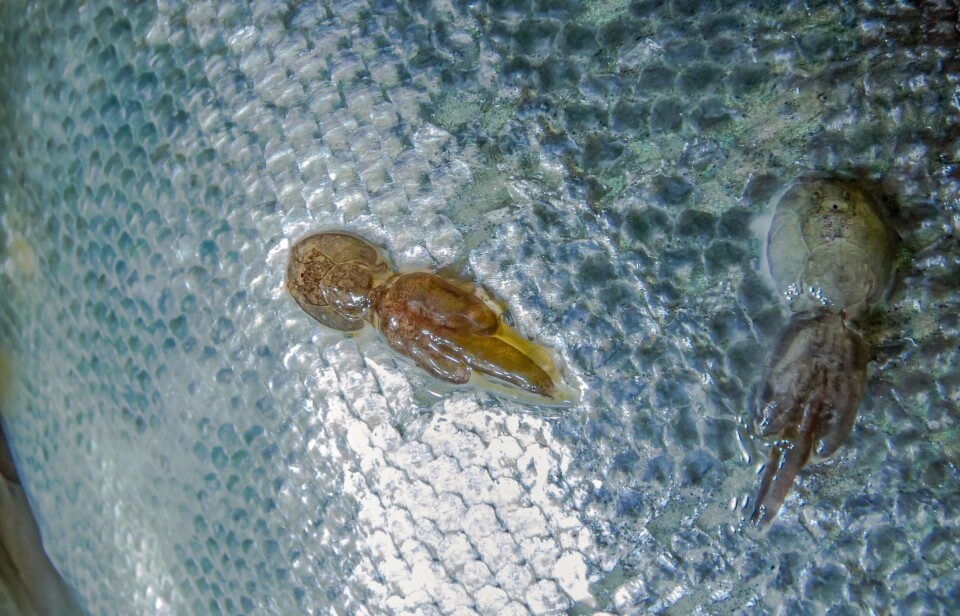
Gene editing may give Atlantic salmon more protection against lice
Scientists identify look at switching genes on and off to make them more like coho
Gene editing may hold the key to giving Atlantic salmon the same in-built protection from sea lice that their distant relatives, coho salmon, have, an international team led by scientists at Edinburgh University’s Roslin Institute and Norwegian food science research institute Nofima says.
The team's research has revealed that layers of skin cells – known as keratinocytes – play a key role in triggering localised swelling that helps coho salmon kill and remove sea lice.
They found that, while both species mount similar immune and wound-healing responses to infestations by sea lice, keratinocytes in the three outermost layers of coho salmon’s skin play a central role in their response to infection.
Encapsulated and expelled
Their findings suggest that keratinocytes in the bottom layer direct the expansion and movement of cells in the middle and top layers, which can eventually encapsulate and expel the parasites. Findings also revealed that sea lice can weaken the immune system of Atlantic salmon.
Using gene editing it could be possible to enhance Atlantic salmon’s sea lice resistance, by targeting genes that underly their susceptibility - and coho salmon’s resistance - to lice, the team says. Gene editing involves the switching off or on of certain genes already present in a plant or animal, and is different from genetic modification, which entails adding genes from one organism to another.
In the research, juvenile fish were exposed to copepodid sea lice (Lepeophtheirus salmonis), and lice-attached pelvic fin and skin samples were collected 12 hours, 24 hours, 36 hours, 48 hours, and 60 hours after exposure, then analysed to see learn they had developed.
Unprecedented resolution
Comparing the cell type-specific responses of resistant and susceptible species to sea lice allowed researchers to identify cell types and molecular pathways involved in determining the mechanisms of resistance in coho salmon and to pinpoint candidate genes that could be targeted to improve sea lice resistance in Atlantic salmon aquaculture.
“We were able to pinpoint with unprecedented resolution the types of cells responsible for the skin swelling response used by coho salmon to resist sea lice, as well as those cells targeted by sea lice in Atlantic salmon to weaken this host species,” said Dr Sarah Salisbury, postdoctoral research fellow at the Roslin Institute.
“These insights pave the way for the development of transformative therapies to counter this devastating parasite.”
Further research
The team has published an open-access research article, Keratinocytes drive the epithelial hyperplasia key to sea lice resistance in coho salmon, in the journal BMC Biology.
“The candidate genes we identified underlying coho salmon’s resistance and Atlantic salmon’s susceptibility hold significant promise for improving sea lice resistance in Atlantic salmon,” the authors conclude, although they point out that the research is only the first step.
“Our study has provided important new insights into the cellular and genetic mechanisms that result in an effective host immune response against sea lice. Further investigation is needed to develop effective ways of applying this knowledge, whether through gene editing or other means, to mitigate the fish welfare, economic and ecological toll of sea lice infestations on the Atlantic salmon aquaculture industry.”
The study was funded by the Norwegian seafood industry research fund, FHF, and the UK government funded Biotechnology and Biological Sciences Research Council (BBSRC). It also involved researchers from the University of Stirling; University of Santiago de Compostela, Spain; University of Prince Edward Island, Canada; Deakin University, Australia; and Benchmark Genetics.























































